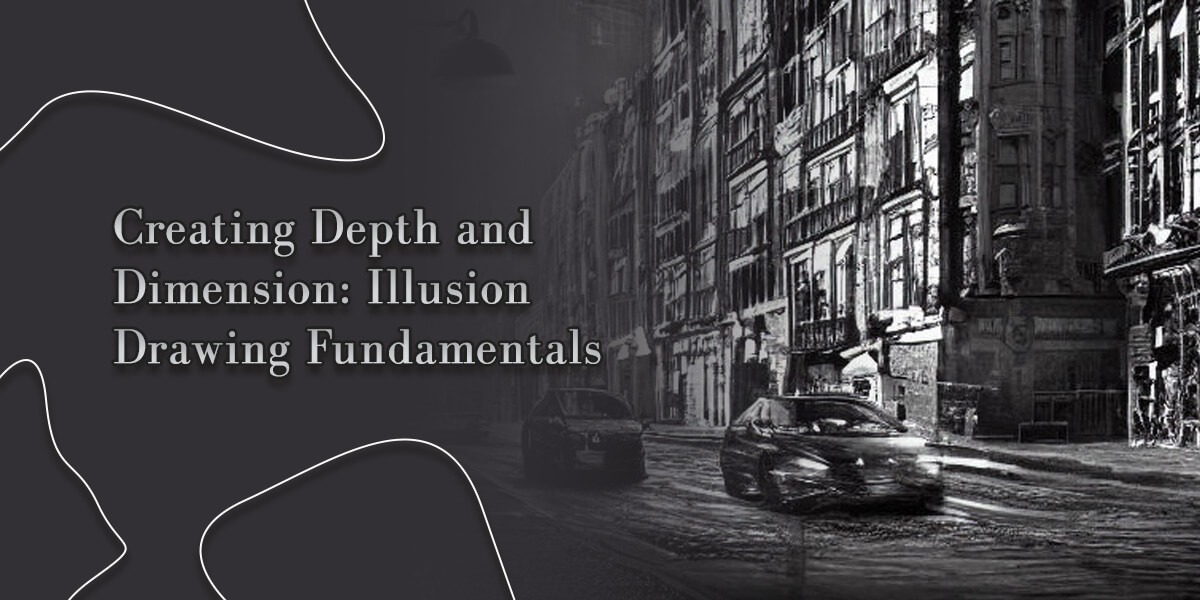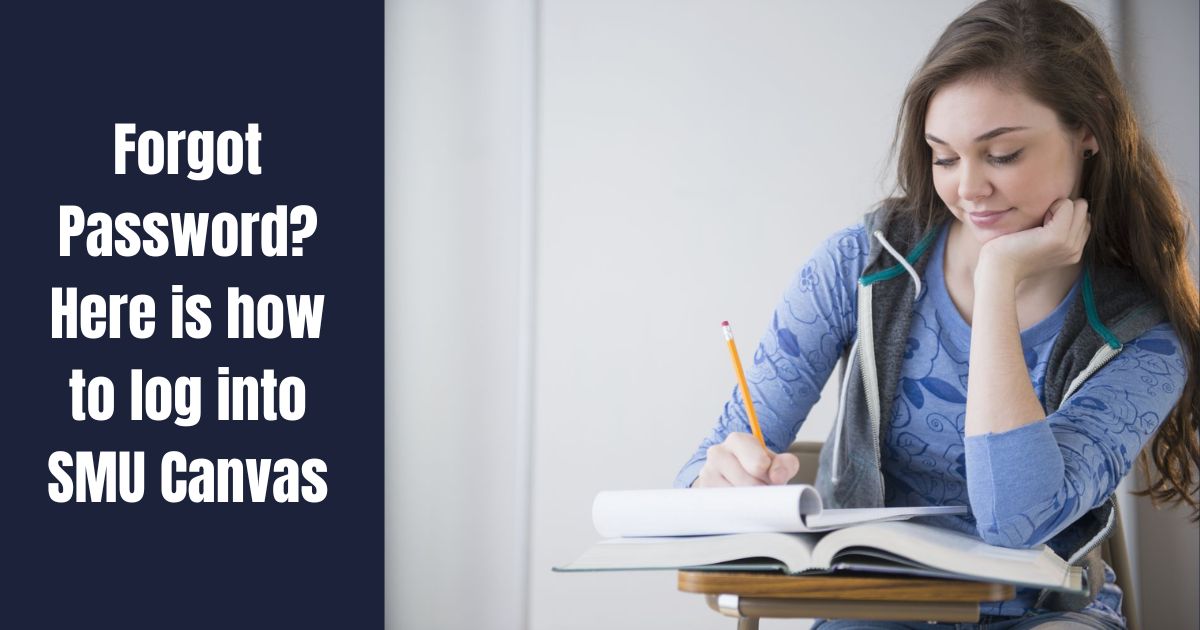Sketching and drawing creative things is a natural talent. People go to classes to learn it or polish their existing skills. Most of the time, when you see someone doing great as an artist, you feel something lacking in their art, which can be depth or illusion. Drawing things with proper depth and illusions is really important to make it look realistic.
To make your sketches look real or make it look like there is something real placed on the canvas, you must learn the fundamentals behind illusion drawing. You can learn techniques like linear perspective, anatomical form, shading and many other techniques. These little things add extra value to your drawings and sketches.
In this article, we are going to teach you multiple techniques of illusion drawings to make your drawings more promising. By the end of this article, you will be equipped with all the techniques that are a must to create illusion sketches.
One-Point Perspective
The one-point perspective relies on the simple yet powerful technique of converging parallel lines toward a single vanishing point on the horizon. But precisely placing that point and carefully constructing the radiating lines that recede into the distance requires practice. In this section, we’ll break down the step-by-step process for establishing your perspective system using basic geometric shapes. We’ll then build on those skills by applying them to more complex architectural subjects like cubes, boxes, and interior rooms. Through examples and exercises, you’ll gain confidence in creating the illusion of three-dimensional space funneling toward the horizon on a two-dimensional surface.
Two-Point Perspective
Taking illusion drawing one step further, the two-point perspective involves juggling the converging lines towards two separate vanishing points, one for each side of your subject. Coordinating these dual systems of philosophy is challenging but yields even more realistic depictions of depth. Here, we’ll methodically work through the additional considerations of a two-point view, such as adequately placing your horizon line and connecting corresponding sides of objects to the vanishing points. Mastering these techniques will allow you to render anything convincingly, from long hallways and roads to entire buildings and cityscapes. Examples will demonstrate how shading elevates these illusions from good to great.
Implied Lines

While one-point and two-point perspectives rely on physically drawing converging lines, implied lines take illusion drawing to another level through subtlety. This section will teach you to suggest a three-dimensional form on a two-dimensional surface using value and shading alone. We’ll explore the concept through basic shapes like cylinders and spheres, demonstrating how carefully blending tones can make a character appear curved rather than flat. With practice applying implied lines, your drawings will take on a new level of realism that fools even the most discerning eye.
Foreshortening
An essential element for bringing figures to life through your drawings, foreshortening examines how to adjust proportions based on an object or body part’s angle relative to the viewer. This chapter will explore the anatomical distortions when limbs are pointed toward or away from us. You’ll learn to render arms, legs, hands, and feet at convincing foreshortened angles through examples of mannequins in various poses. Mastering foreshortening techniques will imbue your illustrations with a new sense of dynamism and realism.
Atmospheric Perspective
Beyond techniques that imply three dimensions through value and lines, atmospheric perspective examines how the very air itself can enhance an Illusion Drawing of depth. This section will study how haze and airborne particles naturally obscure and blend colors/tones over distance in natural scenes. You’ll gain strategies for mimicking these atmospheric effects in your drawings through techniques like softer edges, lower contrast, and lighter values for objects further away. When applied skillfully, atmospheric perspective tricks the eye into perceiving vast depth and space.
Read More: Therapeutic Power of Neurographic Art
Anatomy of Form
While basic geometric shapes provide a strong foundation, mastering complex organic forms are equally essential for hyper-realistic illusion art. This supplemental section will examine applying the same analytical approach to more intricate subjects like the human hand. By closely studying bony landmarks, tendons, wrinkles, and other distinguishing features, you’ll understand how its multi-planar surfaces fold and intersect. Examples will demonstrate capturing these nuanced dimensional properties through deft use of line, value, and shading. The skills practiced rendering hands will quickly transfer to other subjects like faces and total figures.

Environmental Perspective
Beyond individual objects or figures in isolation, skilled illusion artists can transport viewers into fully immersive scenes. This section focuses on techniques for establishing a believable sense of place and dimension across an environment. We’ll explore strategies like maintaining visual consistency with atmospheric effects over various depths, smoothly blending foreground/background color palettes, and thoughtfully arranging flora/fauna/structures in naturalistic compositions. Examples will demonstrate how subtle details combine to convince the eye that an entire landscape, seascape, or cityscape exists beyond the page.
Master Studies
No tutorial would be complete without examining the works of history’s most accomplished illusionists. This chapter features in-depth analyses of seminal pieces from masters like Trompe L’oeil pioneers Giovanni Antonio Canaletto and John Frederick Peto. We’ll dissect their unparalleled mastery of techniques already covered, with a focus on identifying nuanced artistic choices that elevate naturalism to hyperrealism. You’ll also gain insight into each artist’s distinctive style and approach. Studying great works provides endless inspiration and lessons that can be applied to take your own skills to the next level. I hope you’ll finish better equipped to join the ranks of history’s most gifted illusion artists!
Shading Techniques
Of course, the techniques discussed so far would fall flat without skilled use of value, tone and shading. Here, we’ll deeply explore various approaches for layering smooth blends that bring forms to life. Everything from basic outlines to advanced cross-hatching and wet-on-wet techniques will be covered. You’ll also gain an understanding of how to develop your personal shading style. Through demonstrations and exercises, you’ll expand your mastery of using value to imply depth, texture and a believable third dimension on a flat page.
Composition
In the final principles section, we’ll examine how carefully crafting the placement and relationships between all visual elements creates a harmonious illusion. Composition tricks the eye through techniques like overlapping to imply depth, balancing light/dark values and negative space, and directing the viewer’s gaze. With these concepts in mind, you’ll refine your ability to design drawings that immerse and delight the observer. The chapter will also emphasize the iterative process of composing through multiple sketch revisions.
Why is it Important to Create Depth and Illusion Drawing
There are some reasons that you should follow illusion drawing techniques which are given as follows.
- The drawing does not look flat or unrealistic.
- The illusion drawing will give a three dimensional effect to the image.
- Your painting will appear full of life.
- Illusion in drawings interprets sensory stimulation.
Conclusion
By this point, you’ll have gained a comprehensive understanding of the fundamental techniques that allow skilled artists to transcend the flat page and transport viewers into vivid illusory worlds. I hope you now feel equipped to apply these principles of linear perspective, form, shading, atmosphere and composition through your own imaginative works. Please feel encouraged to experiment and share any other questions – I’m here to support you on your illusion drawing journey!




